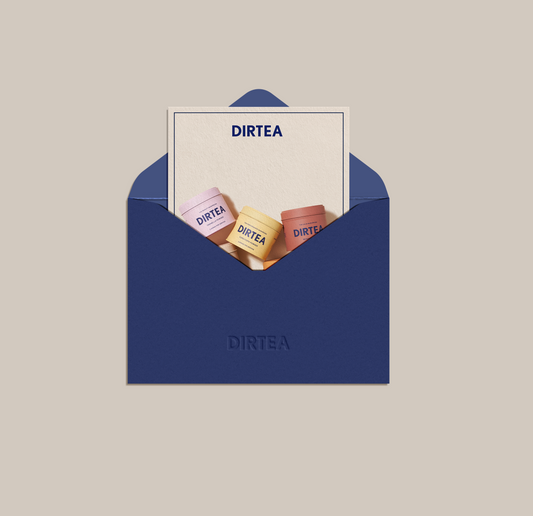The Cortisol Curve: Understanding Your Stress Hormone and How to Balance It Naturally

Share
What Is Cortisol—and Why It Matters
Cortisol often gets labelled the “stress hormone,” but it’s far more complex than that. Produced by the adrenal glands, cortisol helps regulate your metabolism, immune system, and energy levels. In a healthy rhythm, it follows a daily curve—rising sharply in the morning to help you wake up, and gradually declining throughout the day to prepare your body for rest.
This pattern, known as the cortisol curve, is part of your circadian rhythm—the internal 24-hour clock that governs sleep, alertness, and hormonal cycles.
- Morning: Cortisol peaks around 30–45 minutes after waking (the “cortisol awakening response”).
- Midday: It stabilises, supporting energy and focus.
- Evening: Levels drop, allowing melatonin (the sleep hormone) to rise.
When this natural rise and fall is disrupted—by stress, poor sleep, overwork, or stimulants—it can lead to “cortisol flattening”, where the hormone stays elevated all day or dips too early, leaving you fatigued, wired, or anxious.
According to research, chronic stress can weaken the immune system over time, even slowing healing and reducing protection from vaccines and infections.
The Modern Cortisol Problem
In an ideal world, cortisol acts as an ally—giving you the energy to rise, focus, and move. But today’s world is built to keep us in a state of constant alert.
- 77% of people report stress-related physical symptoms, according to the American Psychological Association.
- UK surveys show that digital notifications interrupt focus every 15 minutes, increasing mental strain and adrenaline spikes.
- In accordance with CIPD, figures show that in 2023/24, UK employees lost 29.6 million working days to work-related ill health—almost 16.4 million of them due to stress, anxiety and depression.
When the brain interprets constant pings, deadlines, and late-night scrolling as danger, your adrenals keep producing cortisol. Over time, this blunts the curve—leading to exhaustion, disrupted sleep, cravings, and mood swings.
Understanding Your Cortisol Curve
Visualise your cortisol like a wave:
|
Time of Day |
Cortisol Level |
How You Feel |
What To Support With |
|---|---|---|---|
|
6–9 AM |
Highest |
Alert, energised |
Lion’s Mane for clarity without caffeine spikes |
|
10 AM–2 PM |
Moderate |
Steady energy |
Cordyceps for stamina and vitality |
|
3–6 PM |
Gradual decline |
Calm productivity |
Chaga for sustained energy and antioxidant support |
|
7–10 PM |
Lowest |
Relaxed, sleepy |
Reishi or DIRTEA Cacao to support relaxation and wind down |
This natural cycle is your body’s built-in rhythm for energy management—and when you align your habits with it, you can work with your biology, not against it.
Signs of Cortisol Imbalance
You might be experiencing cortisol dysregulation if you notice:
- Morning fatigue (difficulty getting out of bed despite sleep)
- Afternoon crashes or strong sugar/caffeine cravings
- Evening alertness when you should be winding down
- Frequent colds or low immunity
- Poor sleep quality or early waking
- Mood swings or brain fog
While these symptoms can have many causes, supporting your stress-response system through natural rituals, nutrients, and rest can help rebalance your cortisol curve over time.
Natural Ways to Lower Cortisol
1. Prioritise Restorative Sleep
Poor sleep can elevate cortisol levels the next morning, making you feel wired and tired simultaneously. Create a night-time ritual—dim lights, limit screens, and sip DIRTEA Reishi Calm Powder or DIRTEA Cacao with Reishi.
Reishi mushroom, has been used for centuries in traditional practices to support calm and relaxation. Modern research suggests Reishi’s triterpenes and polysaccharides may help regulate the stress response and promote restful sleep when taken consistently.
2. Balance Your Blood Sugar
Cortisol spikes when blood sugar drops. Skipping meals, high-sugar breakfasts, or caffeine on an empty stomach can all trigger this. Instead:
- Eat protein-rich breakfasts (oats with nut butter, eggs, or smoothies).
- Add Lion’s Mane Focus Powder to your morning coffee or matcha for calm focus.
- Avoid relying on caffeine alone—it temporarily raises cortisol and can cause mid-day crashes.
3. Move, Don’t Overtrain
Exercise is powerful for lowering stress—but intense workouts can actually increase cortisol if overdone.
Try balance:
- Morning walks to align your circadian rhythm with daylight.
- Strength or cardio sessions before noon, when cortisol is naturally higher.
- Stretching or yoga in the evening to signal rest.
Cordyceps, found in DIRTEA Performance Powder and Gummies, is renowned for supporting energy, endurance, and oxygen utilisation—helping you sustain physical performance without overstimulating your adrenals.
4. Support Your Nervous System with Adaptogens
Adaptogens are natural substances that help your body adapt to stress and maintain homeostasis. Mushrooms like Reishi, Lion’s Mane, and Chaga are functional adaptogens used to support the HPA axis (hypothalamic–pituitary–adrenal system), the network that governs your stress response.
- Reishi: May help reduce feelings of tension and improve sleep quality.
- Lion’s Mane: Supports focus and cognition by promoting nerve growth factor (NGF) production.
- Chaga: Rich in antioxidants that combat oxidative stress caused by high cortisol levels.
5. Try Mindfulness and Breathwork
Even five minutes of deep breathing can reduce cortisol by activating your parasympathetic nervous system—the body’s “rest and digest” mode.
Try this:
- Inhale for 4 counts, hold for 4, exhale for 6.
- Combine with your DIRTEA Calm Ritual—a warm mug of Reishi in the evening.
- Journaling, gratitude practice, or gentle meditation can also reinforce safety cues in the brain.
A Daily DIRTEA Ritual for Cortisol Balance
Morning:
- Wake naturally, get 10 minutes of sunlight exposure.
- Drink Lion’s Mane Focus Powder in your coffee or matcha for a smooth start.
Afternoon:
- Stretch or take a short walk after lunch.
- Sip Cordyceps Performance Powder to stay energised without the crash.
Evening:
- Dim lights an hour before bed.
- Prepare Reishi Calm Powder or DIRTEA Cacao to signal rest.
- Reflect, breathe deeply, and let your body unwind.
This rhythm-based approach supports a healthy cortisol curve—giving your mind clarity in the morning, energy at midday, and calm at night.
Final Thoughts: Rethinking Stress
Cortisol isn’t your enemy—it’s your body’s way of protecting you. The key is not to eliminate it, but to restore its rhythm.
Natural routines, nourishing nutrition, and functional mushrooms can all help you move from reactive stress to resilient calm. With mindful choices and daily rituals, you can reshape your cortisol curve—so your energy, mood, and focus align with the life you’re building.
FAQs
Q: What exactly is the “cortisol curve”?
It’s your natural daily rhythm of cortisol: highest in the morning to help you wake and focus, then gradually falling through the afternoon and evening so you can unwind and sleep.
Q: How do I know if my cortisol rhythm is off?
Common signs include morning grogginess, afternoon crashes, wired-but-tired evenings, broken sleep, low mood, frequent colds, or strong sugar/caffeine cravings. If symptoms persist, speak to a healthcare professional.
Q: Can I actually “lower” cortisol?
You don’t need to eliminate cortisol—just rebalance it. Consistent sleep, daylight exposure, balanced meals, movement, breathwork, and a calming evening routine can help restore a healthier curve.
Q: Do functional mushrooms replace good sleep and nutrition?
No. They’re food supplements that may support your routine. Prioritise sleep, whole foods, hydration, and daylight; use mushrooms to complement—not replace—healthy habits.
Q: Will coffee ruin my cortisol?
Caffeine can nudge cortisol up, especially on an empty stomach. Try caffeine after food and consider DIRTEA Coffee, which includes Lion’s Mane and Ashwagandha for a smoother, less “jittery” feel.
Q: Can I combine different mushrooms?
Yes. Many people stack Lion’s Mane (day) with Reishi (night), and use Cordyceps on active days. Start low and build gradually to find your sweet spot.
Q: Should I take them with food or on an empty stomach?
Either can work. If you’re sensitive to caffeine or experience tummy discomfort, take powders/gummies with food. Reishi is often enjoyed after dinner as part of a wind-down ritual.
Q: Are DIRTEA products suitable for daily use?
Yes—most customers use them daily. Consistency matters for rhythm and routine.
References
-
Schneiderman, N., Ironson, G., & Siegel, S. D. (2005). Stress and health: Psychological, behavioral, and biological determinants. Annual Review of Clinical Psychology, 1, 607–628. https://doi.org/10.1146/annurev.clinpsy.1.102803.144141
-
Panossian, A., & Wikman, G. (2020). Effects of adaptogens on the central nervous system and the molecular mechanisms associated with their stress-protective activity. Frontiers in Pharmacology, 11, 568215. https://www.apa.org/news/press/releases/2007/10/stress
-
Chartered Institute of Personnel and Development. (2025). Employee health and wellbeing. CIPD. Retrieved October 16, 2025, from https://www.cipd.org/en/views-and-insights/cipd-viewpoint/employee-health-wellbeing/










































